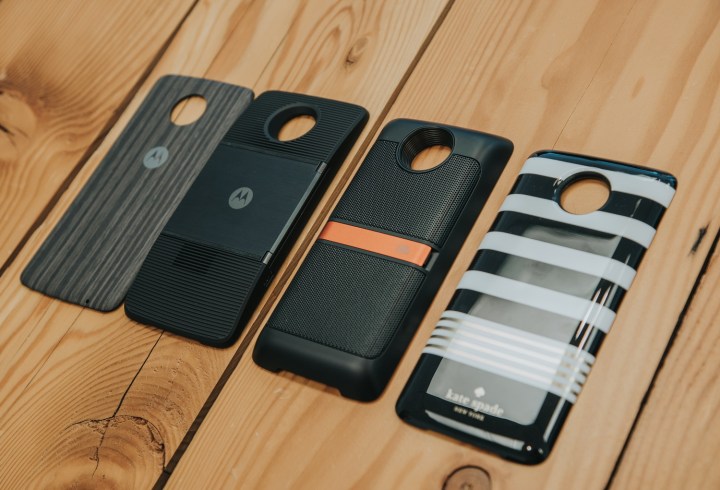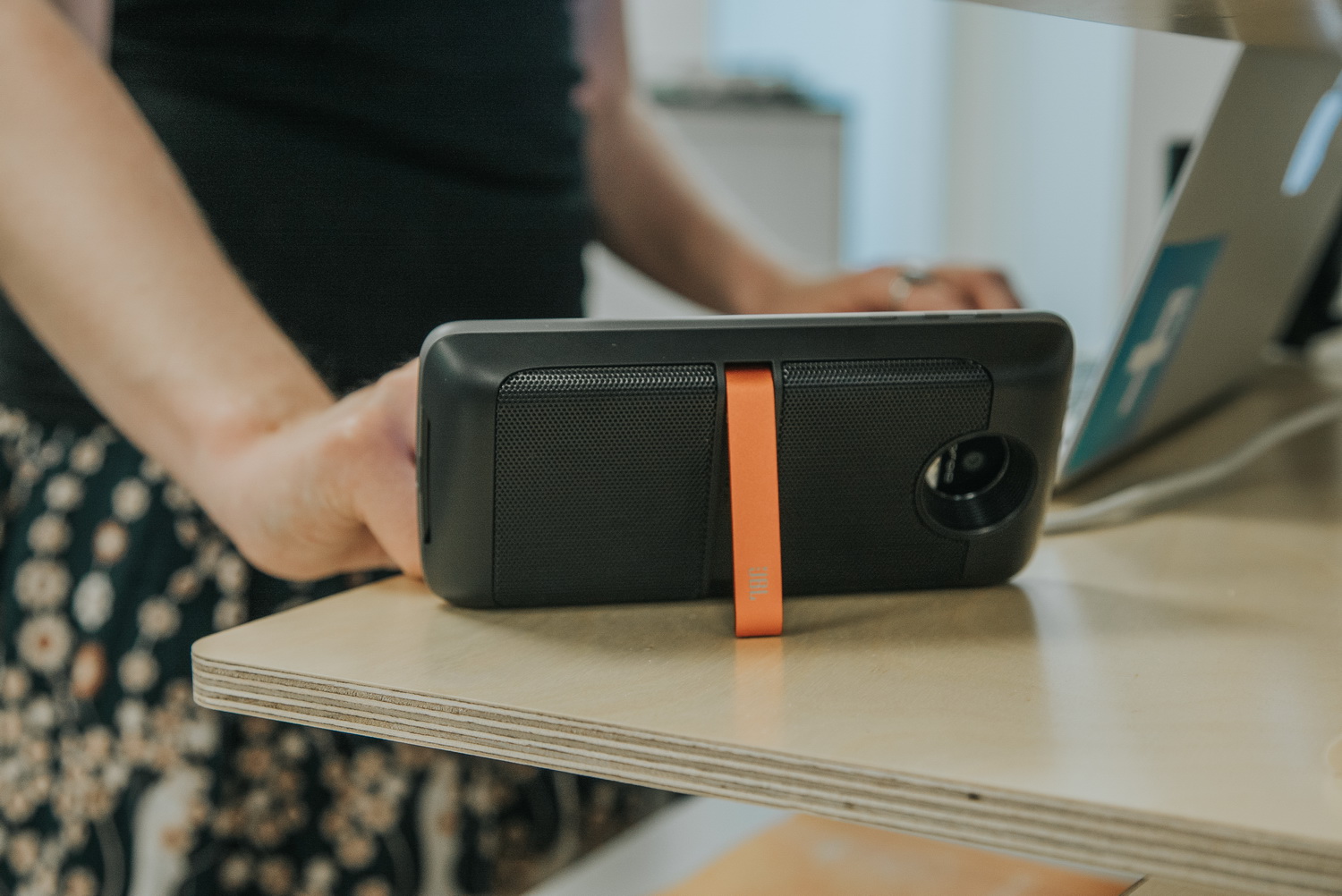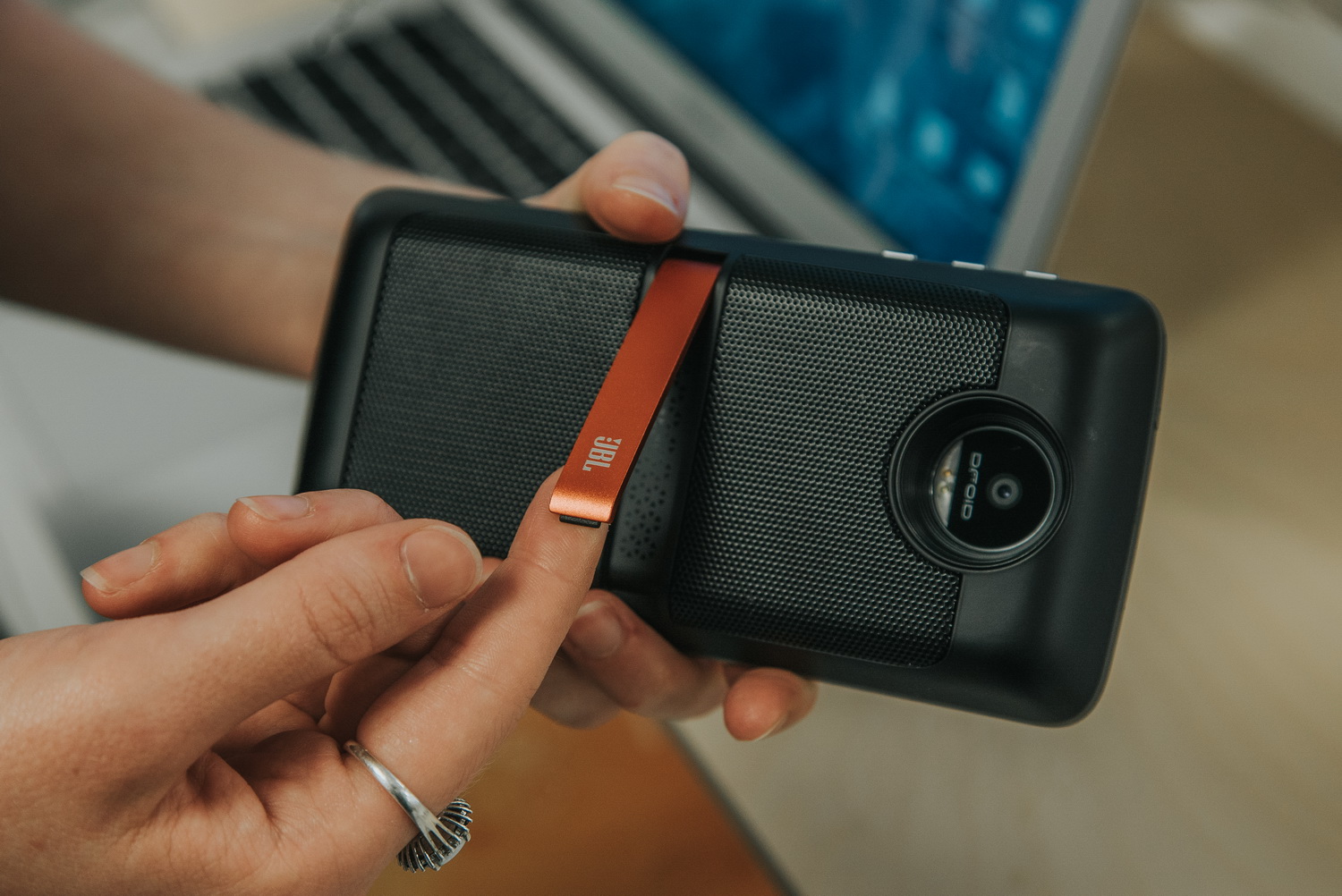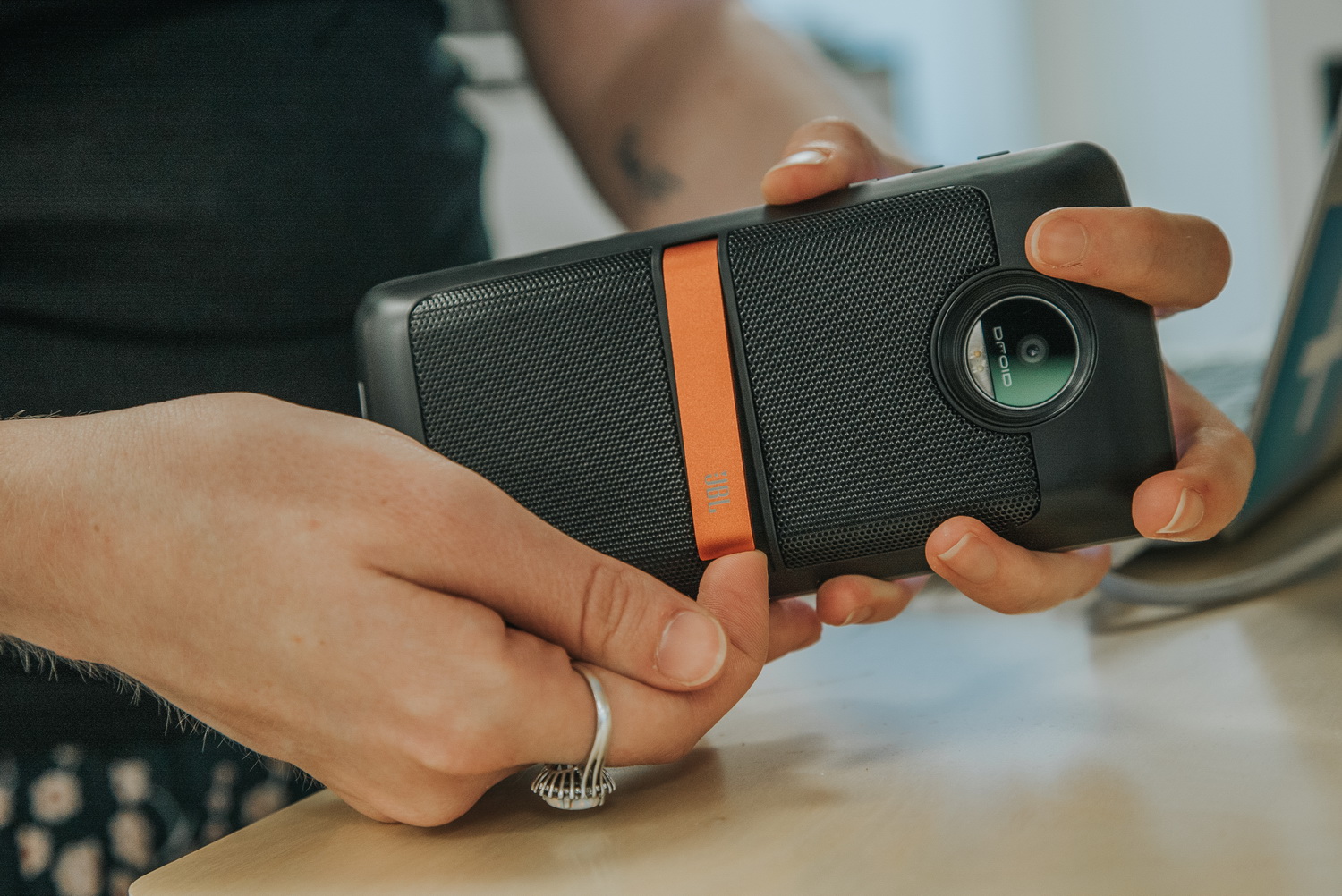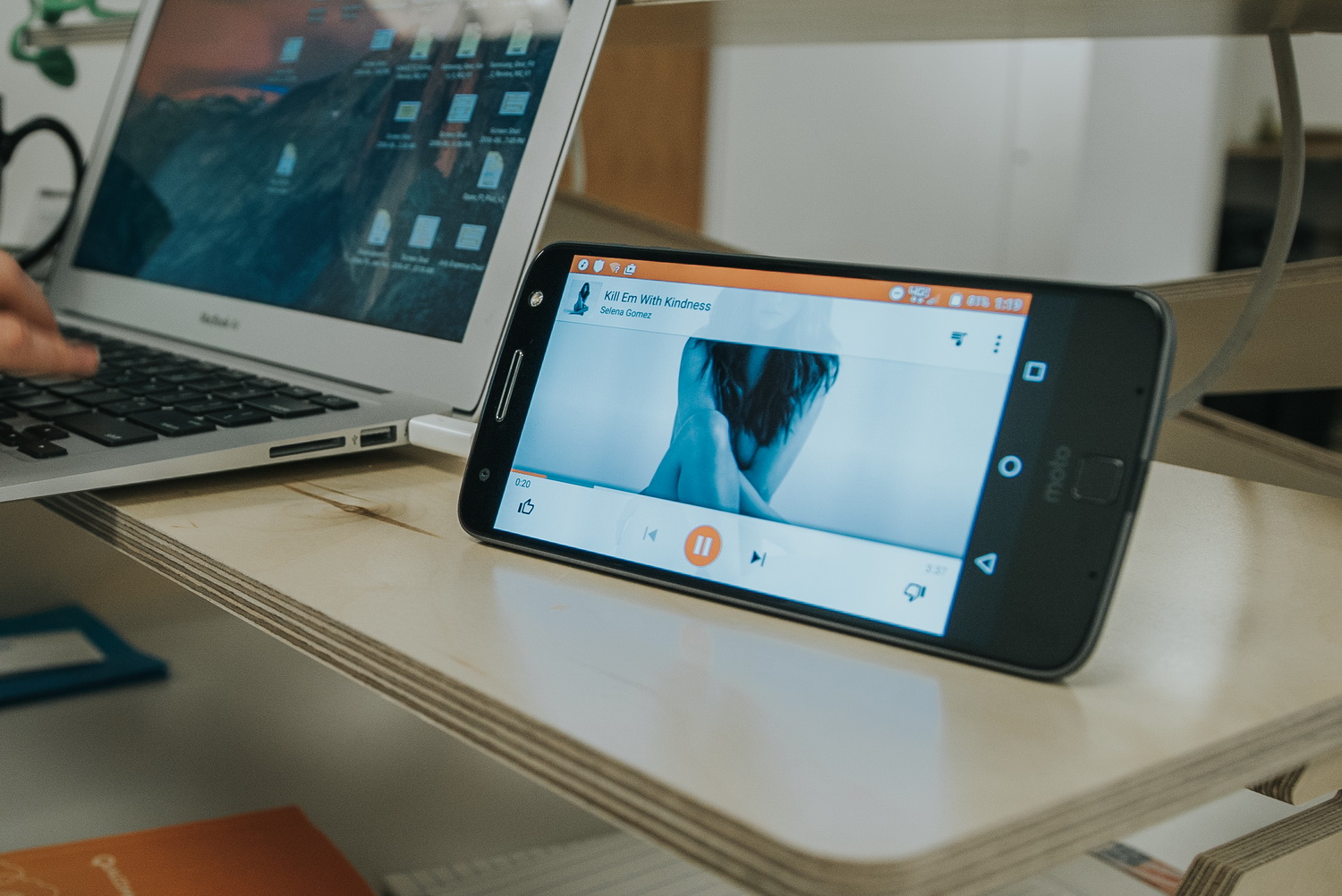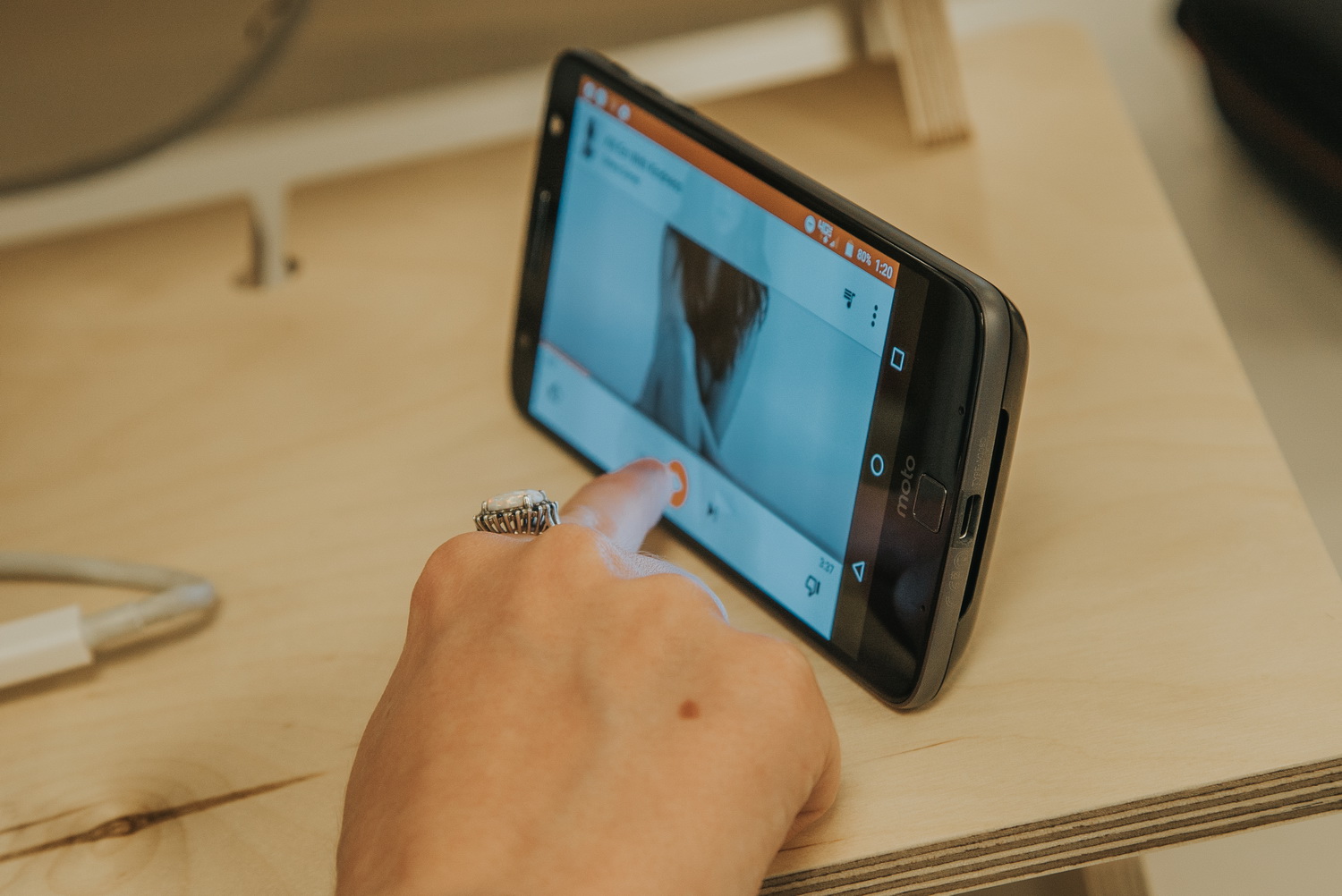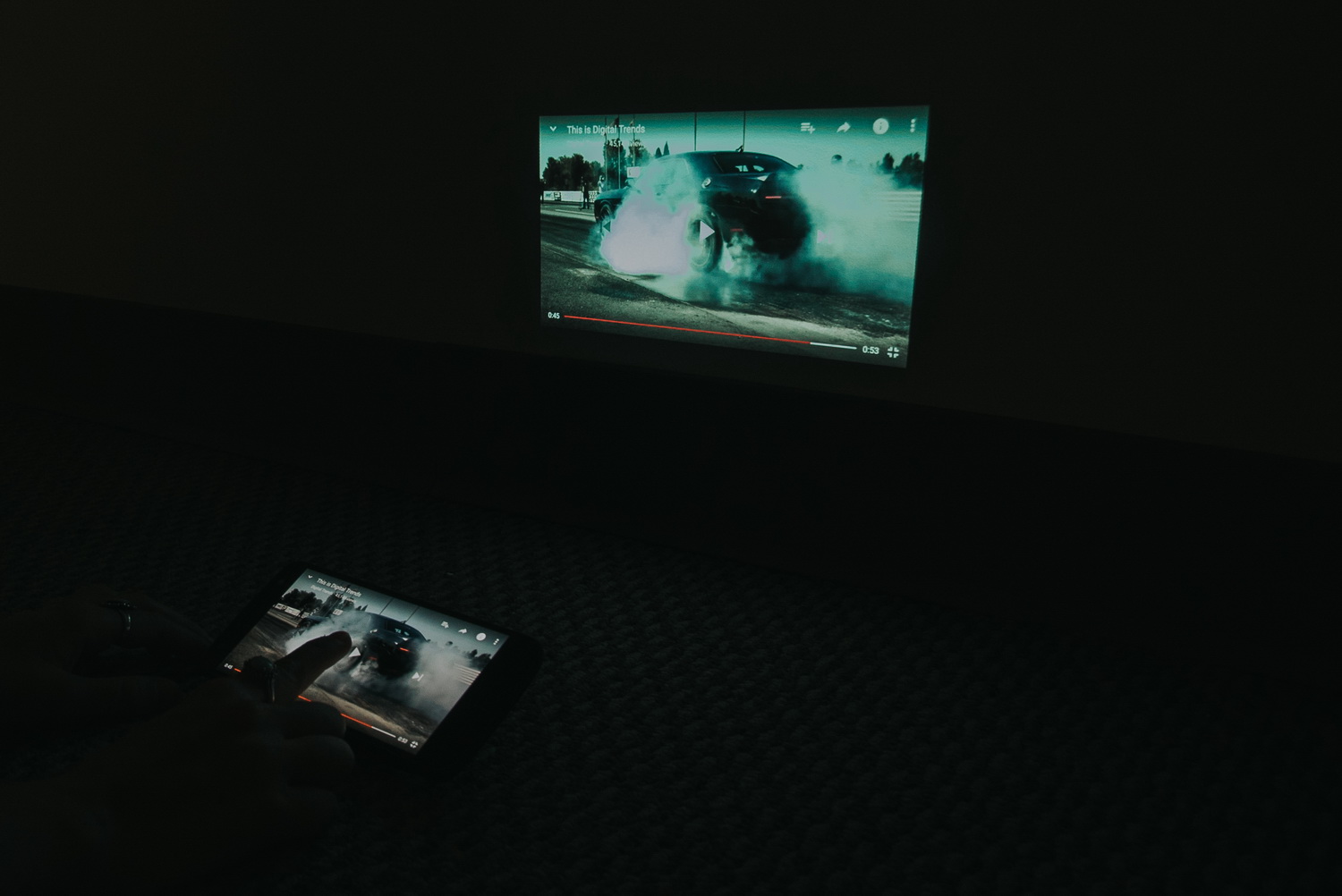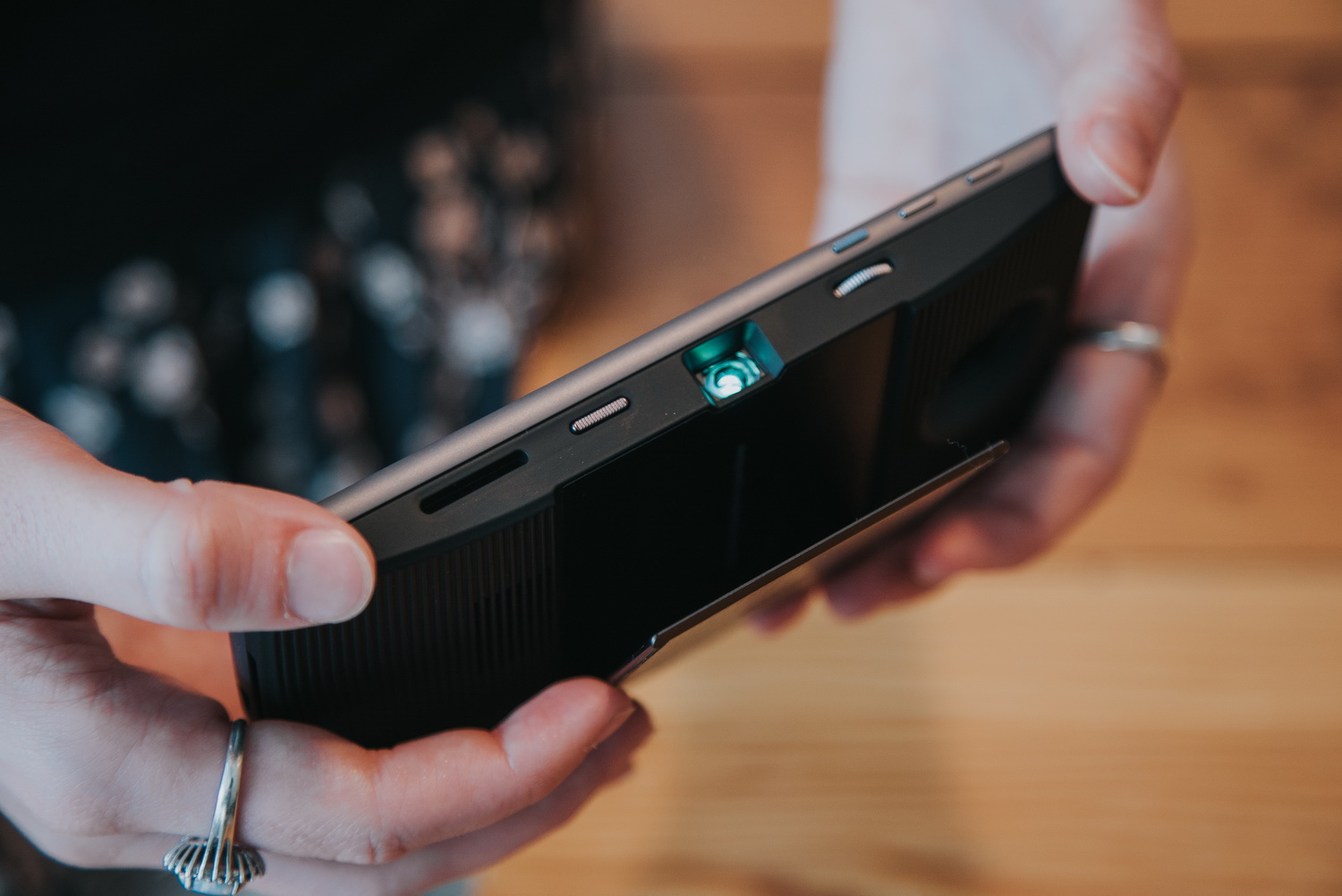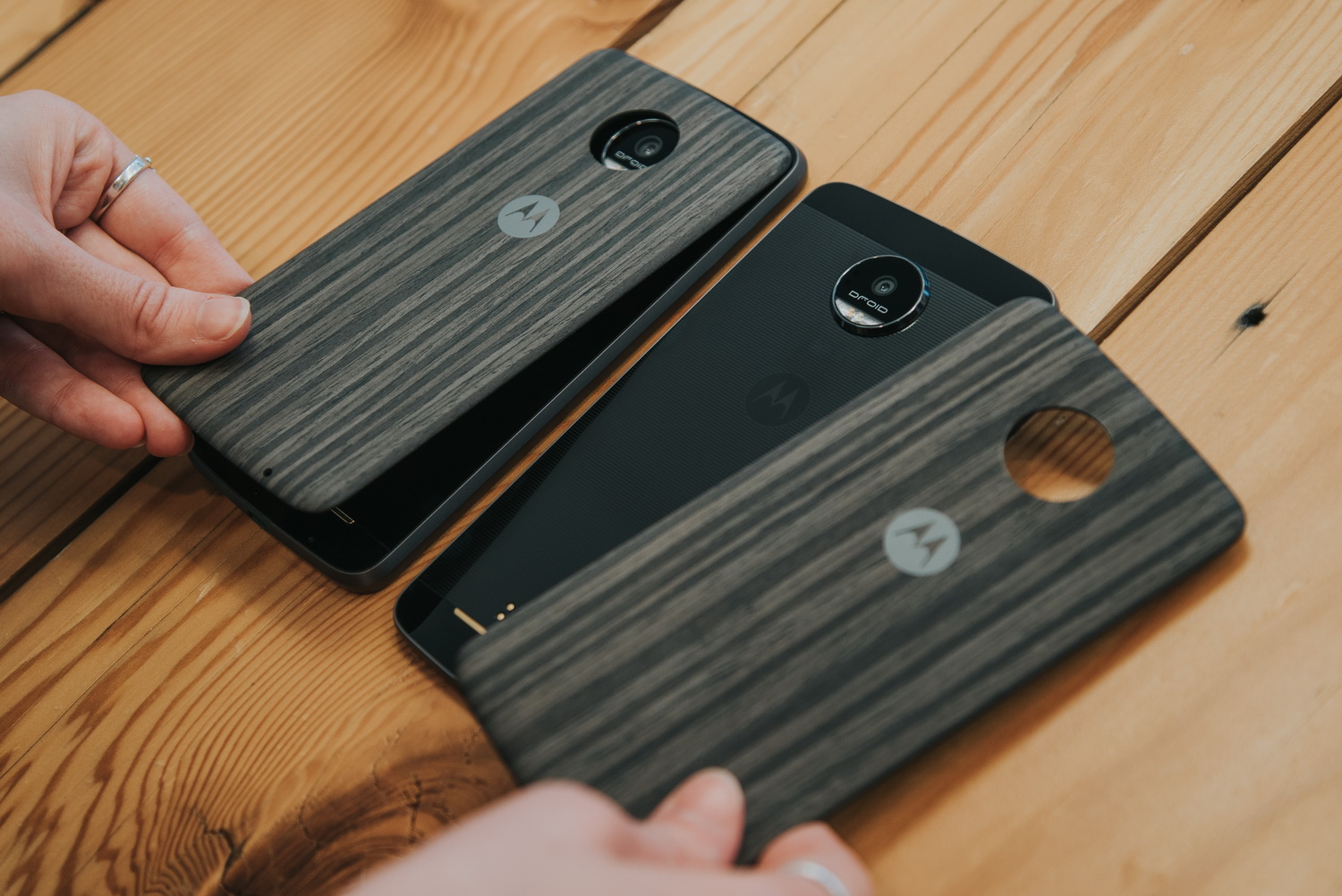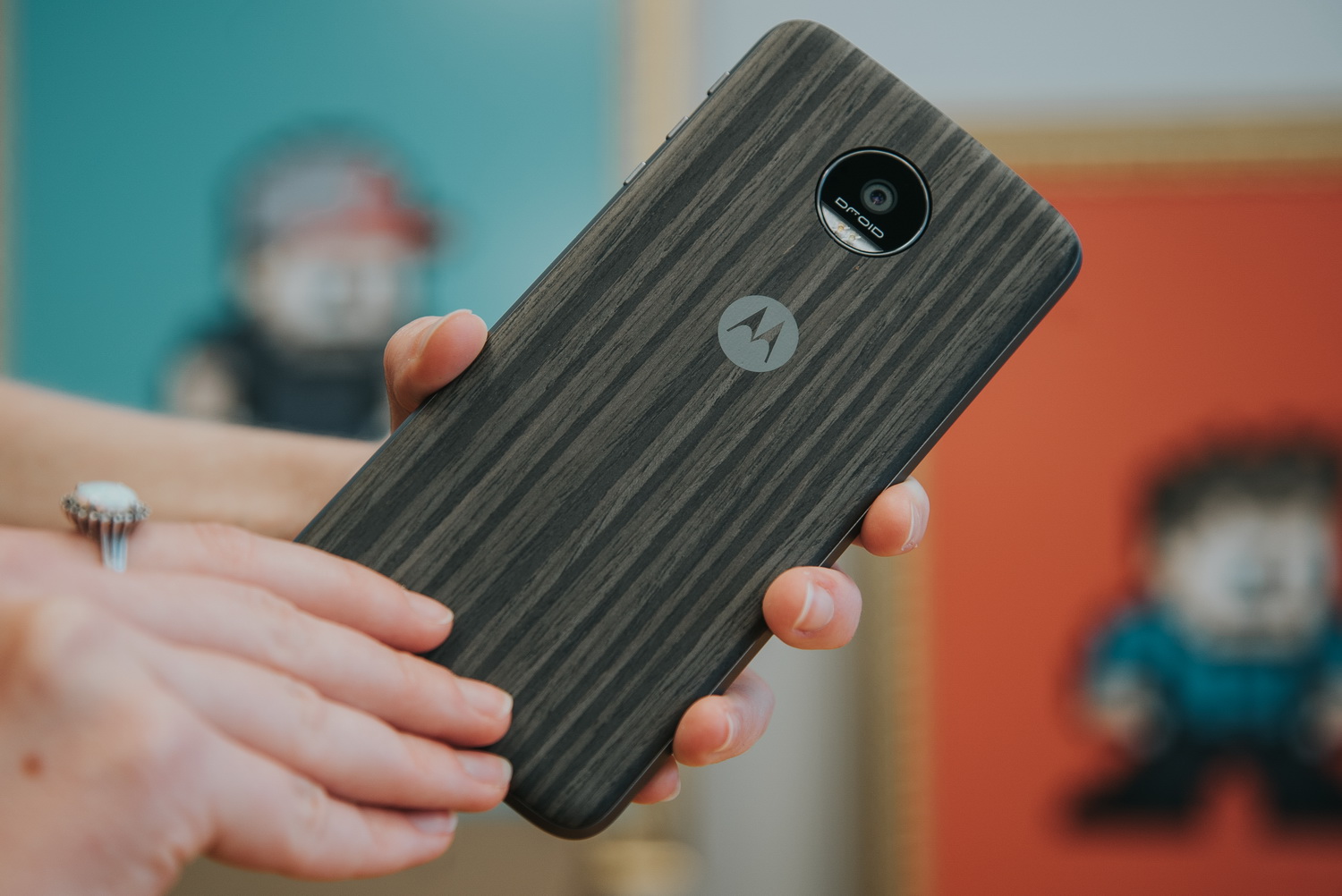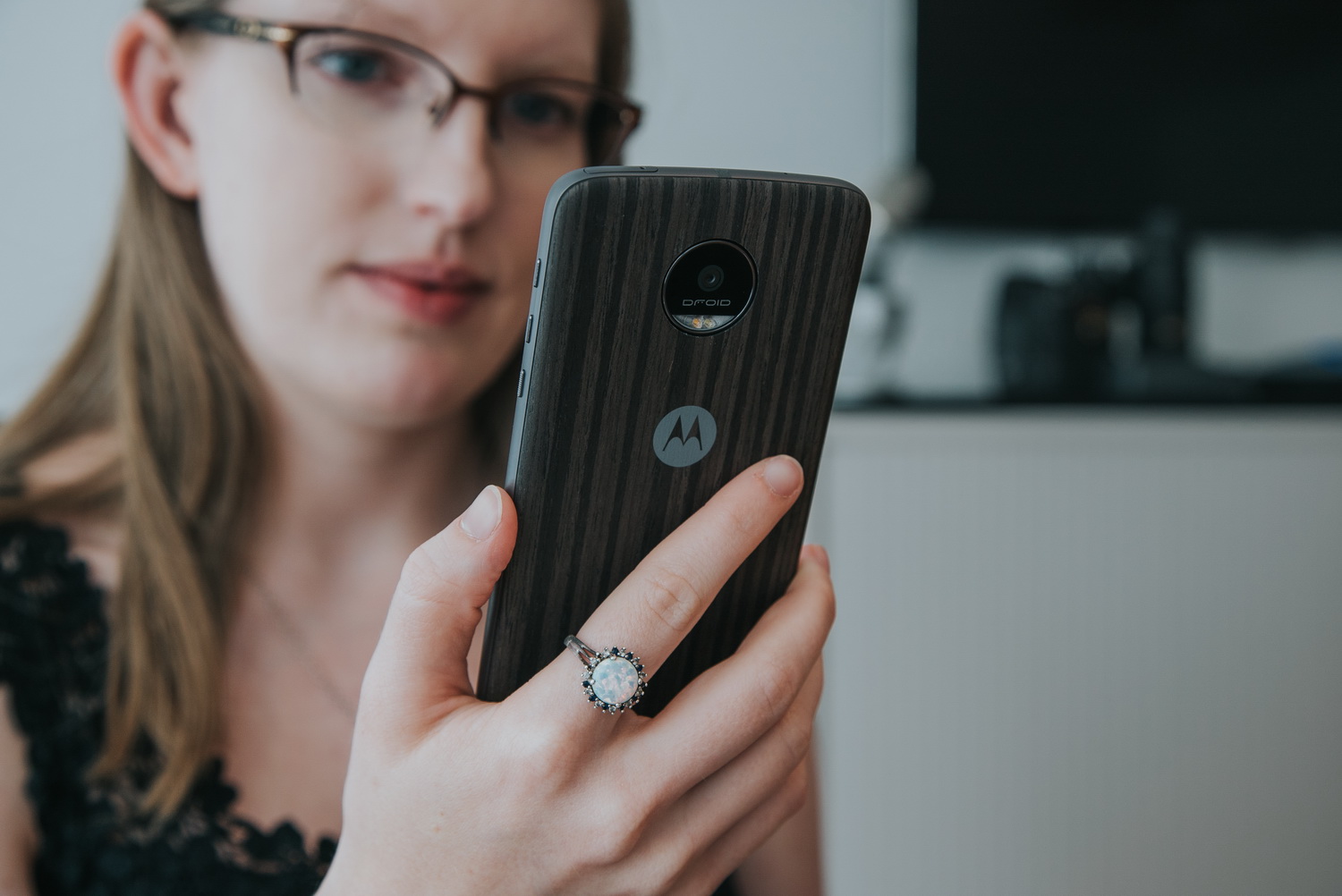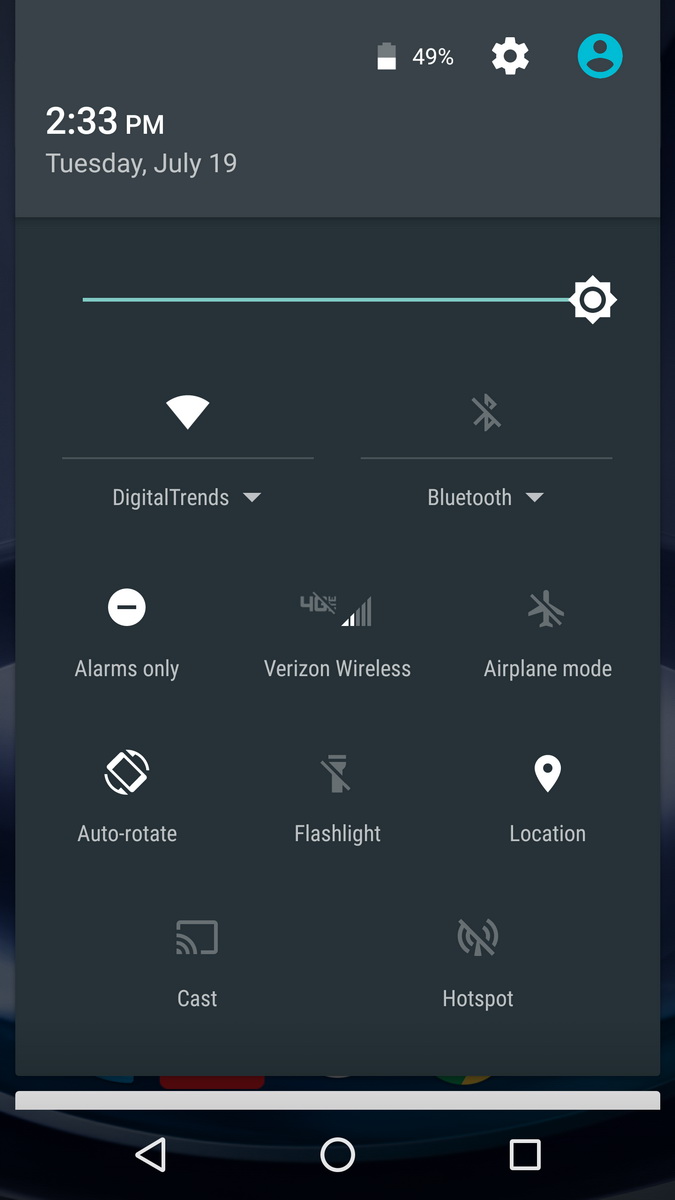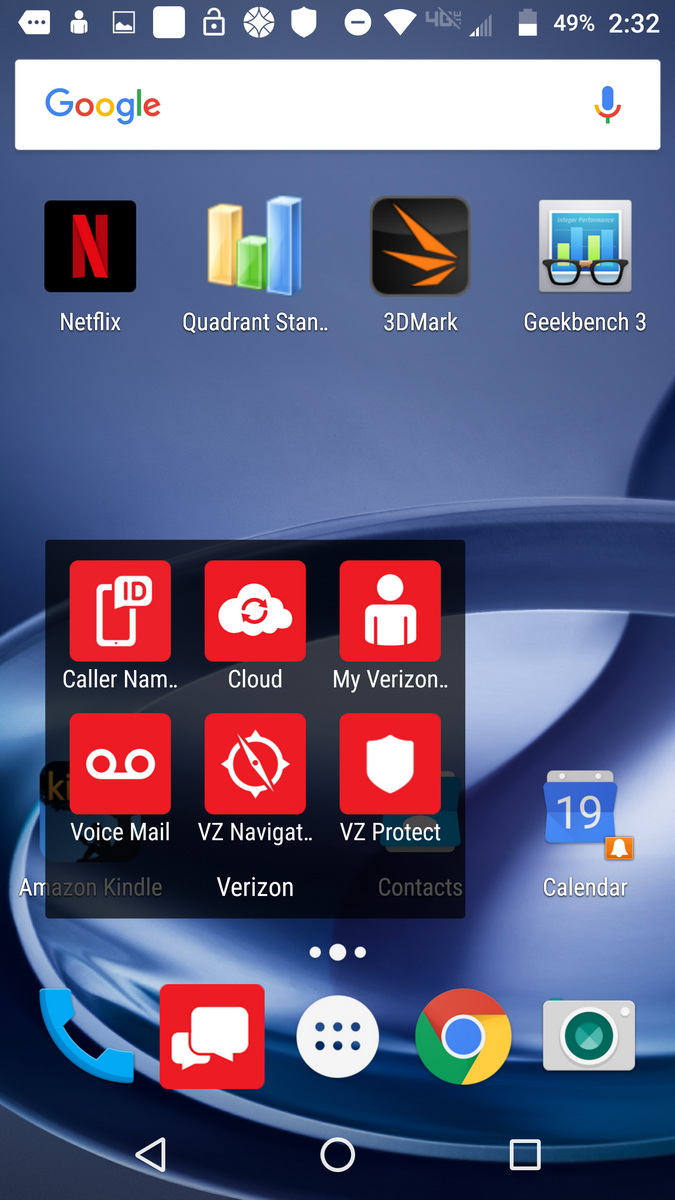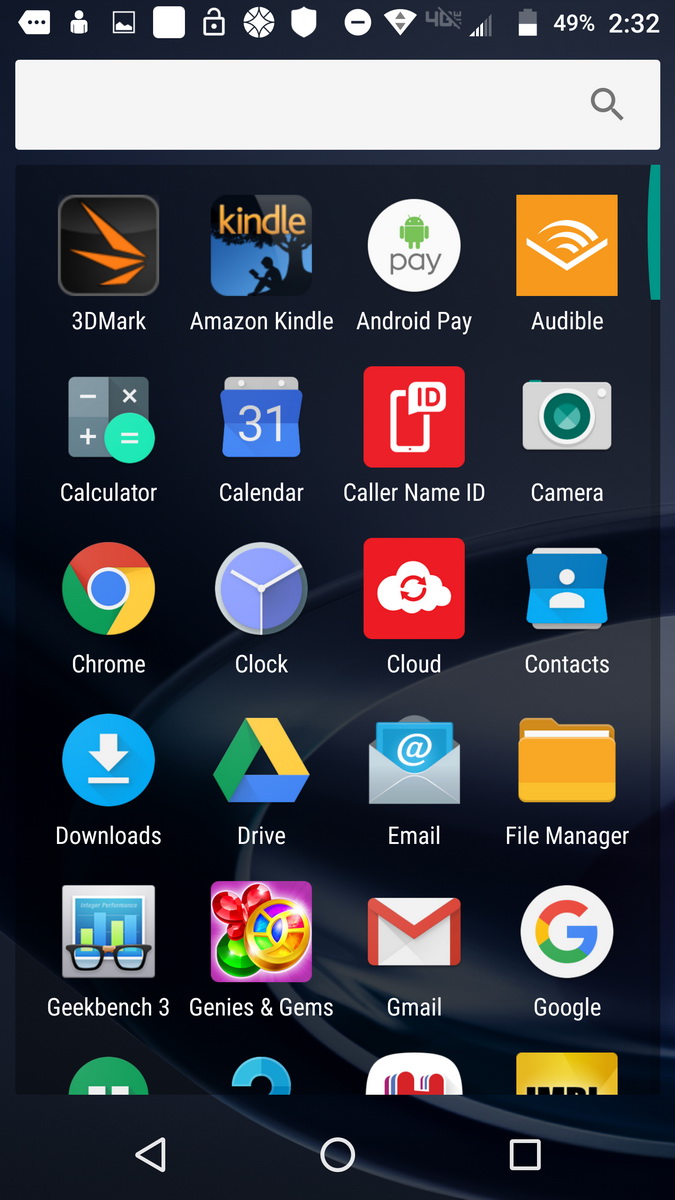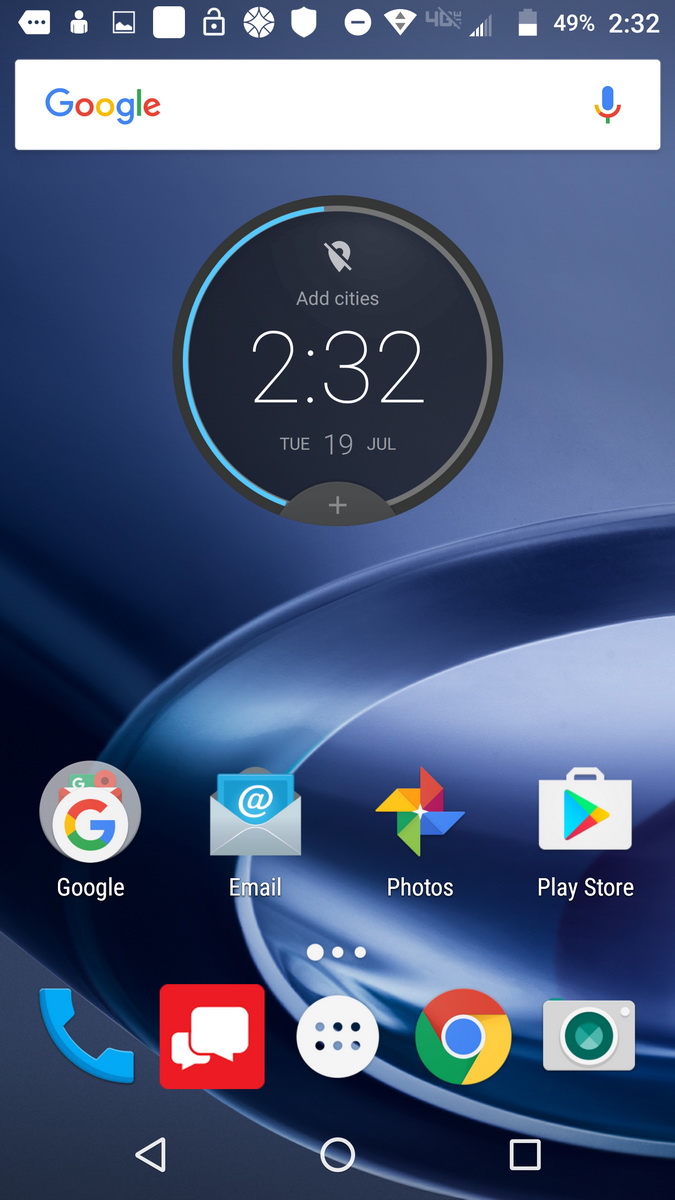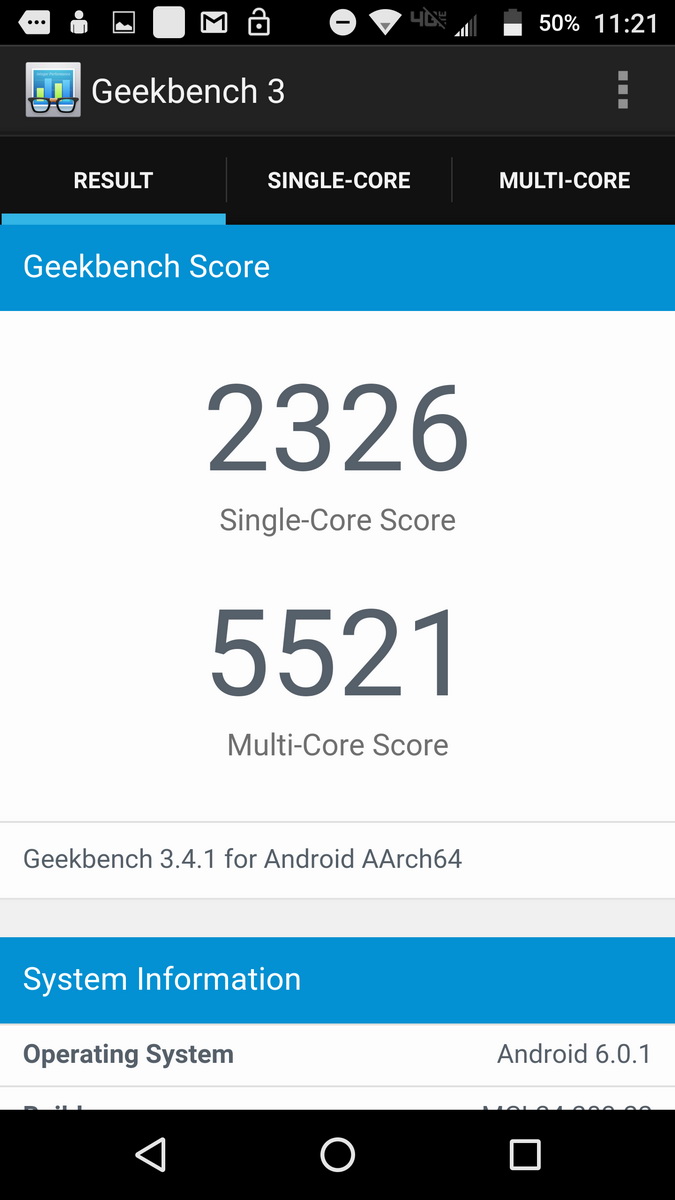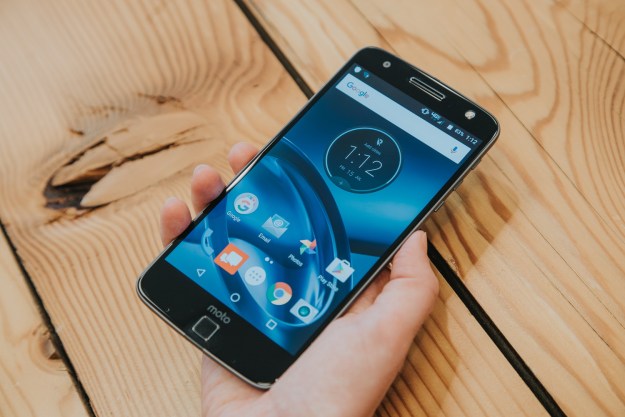
“The Moto Z is the first ‘modular’ phone you’ll want to own on Verizon.”
- Smart modular design
- Strong processor
- Turbo Charging
- Fingerprint sensor
- Ability to personalize with Style Mods
- Moto Z Force exclusive to Verizon
- Expensive modules
- Camera takes a long time to focus
- No headphone jack
The Moto Z is a brave new experiment in many ways, but its boldest venture lies in its modularity. Just like the LG G5, the Moto Z works with a number of modules that give the device super powers, transforming it from just another great smartphone into smartphone plus a bonus speaker, projector, battery pack, and more.
Does the Moto Z live up to its promise? Let’s find out.
Editor’s note: We’ve put both the Moto Z and Moto Z Force in one review, because the differences are minimal. We’ve noted all differences and our preference in this review.
Smart modular design
Modules are so hot right now. Ironically, it was Motorola who started the whole concept with Project Ara, its modular smartphone concept, which was taken over by Google. Tech geeks are enamored with the idea of customizing their smartphones with modules that they can swap in and out at will. So far, everyone has been doing it wrong.
LG’s G5 makes you press a button, eject the bottom of the phone, wrench the battery pack from its grasp, and reinsert it in a new module before rebooting your entire device. It’s not user friendly at all, and there are exactly two modules you can buy right now, neither of which is great.
Project Ara doesn’t even exist yet, but it at least makes sense with easy-to-add modules that you can change without turning your device off. Still, the idea is almost like walking round with a phone built out of Legos, what with all those small pieces, and tech geeks are sad you can’t change the processor or RAM.
For now, we have the Moto Z and Z Force. Lenovo (which now owns Motorola) understands how modules should work. The modules it offers are polished products like brand-name battery packs from Kate Spade and Incipio, a JBL SoundBoost speaker, and an Instashare projector. They’re also easy to pop on and off, but they stay attached with very strong magnets.
The modules don’t shift around, fall off, or detach accidentally. The magnets make it incredibly easy to swap to the module you want without hassle. The ease of use makes you want to use these modules all the time, unlike the LG G5, which almost discourages use with its awkward battery yanking and rebooting. Magnets may seem totally obvious and uninspired, but they sure do work. To quote Jesse Pinkman, “Yeah, bitch! Magnets!”
Speaker Mod
As for the individual modules, they’re not terribly exciting, but they are useful. The JBL SoundBoost has two speakers built-in, and the audio technology is powered by JBL. It has its own kickstand, so you can prop up your phone and jack up the volume. It sounds great, and it eliminates the need to carry around a bulky Bluetooth speaker with you at parties or to the beach. It also adds an additional 1,000mAh battery, and the mod will use that battery first before tapping into the phone. The Moto Mod is slim enough to carry with you and it costs $80. The speaker is the most mainstream module for the Moto Z, and it’s probably the one most people should buy – assuming you don’t already own a Bluetooth speaker, that is.
Projector Mod
Our other favorite Moto Mod is the quirky Moto Insta-Share Projector, which lets you turn any wall into a 70-inch screen. It doesn’t add too much bulk to the slim Moto Z, and it has an adjustable kickstand, so you can get the angle just right. The projected image automatically straightens and focuses, so you shouldn’t get a crooked or blurry image. If it’s a bit off, you can adjust it with a focusing wheel. Sadly, the resolution is a mere 854 x 480 pixels, and it’s not very bright (50 lumens), but considering its size and portability, it’s a decent projector.Thanks to the 1,100mAh battery inside the Projector Mod, you can watch an entire 2-hour movie on it before you’ll run low on juice. People make fun of Lenovo’s obsession with projectors – the company puts them in tablets, too – but it was fun to watch a handful of Bloodline episodes projected on my bedroom wall. Sure, if you have a big-screen TV, it may not be too useful, but it can make movie night fun. We wish it were brighter, though. You can really only watch anything on it when it’s pitch black out. The $300 price tag is also high, considering that you can get a higher resolution and brighter projector for about the same price or a couple hundred dollars more.
Wireless Charging Mod
We also tried out the $80 Kate Spade Style Shell Moto Mod, which includes an extra battery or Wireless Charging powers inside. The mod adds much less chunk to the Moto Z than comparable battery cases from Mophie add to the iPhone. We barely noticed there was a battery pack on the phone, but we certainly appreciated the full extra charge it gave the Moto Z when the battery started to run out of juice.It’s a practical mod that we’d recommend to anyone who buys the slimmer Moto Z. If you get the Force with its larger battery, you probably won’t need it. If you’re not into Kate Spade’s black and white striped pack, Tumi has a plain black one for you that’ll do the job.
Style Moto Mods
Finally, if you miss the ability to customize your phone with Moto Maker, you’ll be glad to hear about the Style Moto Mods. These slim backs snap on the back of your Moto Z and you can choose from a number of colors and materials, including wood and fabric. Our Moto Z came with a gorgeous dark grain wooden back, which we loved.While these mods might not be thrilling, they are practical – especially the battery pack and the speaker. The projector is less applicable for most people and has a few limitations. These mods are more practical and plentiful than those that are available for the LG G5.
Luckily, Lenovo is working with developers to make more mods for the Moto Z, and promises that any new Moto Mods made for the next two years will be compatible with the Moto Z. At that point, the company expects you’ll want to upgrade to its next modular phone. Assuming the phone sells, new mods will likely come. Until then, we’re holding our breath.
Lenovo undoubtedly does a better job with its mods than LG and others, but they’re still not absolute must haves. The jury’s still out on the value of modules, but we do see potential here.
Slim design and stellar specs
Let’s get this out of the way: I hate glass-backed phones. They’re fragile, they pick up too many fingerprints, and they’re slippery. The 5.2-millimeter Moto Z is so thin it’s scary, and to top it all off, it is made of glass front and back. The metal frame gives grip, but it doesn’t have curves like the Galaxy S7, so it digs into your palms a bit. The shiny metallic back has subtle striping, but it doesn’t have style. The camera bulge is unattractive and boy, does it stick out.
It also lacks a headphone jack, which is just plain silly. However, that seems to be an annoying trend, thanks to rumors that Apple will ditch the headphone jack on the
I don’t like touching the Moto Z when it’s naked, but it sure feels great when it has the wooden back on it. In addition to making the Moto Z look gorgeous, the Style mod eliminates the camera bulge, adds a much-needed curve to the back of the phone, and offers better grip. It’s best to keep the Style mod on your Moto Z at all times – that is, until you want to snap on another mod.
Although the Z Force is thicker at 7 millimeters, it also benefits from the Style mod. The Z Force is thicker and noticeably heavier than the regular Moto Z, but it’s still not overly fat for a flagship phone. The Force has the added benefit of a shatterproof screen, thanks to the Shattershield technology, which debuted on the Droid Turbo 2 last year. This time around, the strong screen on the Force doesn’t look any different than the more fragile screen on the standard Moto Z.
We dropped the Moto Z Force onto concrete, wooden floors, metal plates, and ceramic tile from about 4 feet up, and the screen didn’t pick up a single scratch. You can read all about how the multiple layers of glass and plastic protect the phone’s screen from shattering here.
It’s an amazing feat of technology, and we wish every phone had the same level of protection. If you’re accident prone, you should buy the Moto Z Force for Shattershield protection alone. Lenovo is so confident in Motorola’s shatterproof screen tech that the Force’s screen even has a four-year warranty. Good luck trying to break it.
Unfortunately, neither the Moto Z nor the Force has true water resistance like the Galaxy S7. Both feature a nano-coating, which should protect from minor spills or splashes, but nothing more. Don’t take this phone to the beach.
The AMOLED screen itself measures 5.5-inches on both models with the same Quad HD resolution of 2,560 x 1,440 pixels. Both the screen and the resolution are impressive. The phones are also powered by the same Qualcomm Snapdragon 820 processor that is in devices like the Samsung Galaxy S7 Edge and LG G5. A whopping 4GB of
The Moto Z and Force come with your choice of 32GB or 64GB of storage, which is expandable up to a whopping 2TB via a MicroSD card.
A fingerprint sensor on the front of the phone rounds out the specs, adding security and mobile payments. It’s a quick and responsive sensor, though the little square awkwardly protrudes from the phone’s body.
We have absolutely nothing to complain about spec-wise. The Moto Z is on par with every other major flagship from 2016 that we’ve reviewed, including the Galaxy S7, the LG G5, the HTC 10, and the OnePlus 3.
Cameras with focusing problems
The camera is one of the few areas in which the specs for the Moto Z and the Force diverge. The regular Moto Z has a 13-megapixel-rear camera, while the Force has a 21-megapixel camera with optical-image stabilization to keep your shots and videos steady. The Force takes slightly better photos, though we encountered a problem with fast focusing on both phones.
Neither phone focused or took photos with the speed or ease that we expect from flagship phones. It took far too long to focus on any subject in any light condition. Even on a bright sunny day, the Moto Z and Force struggled to focus and snap the photo quickly. The camera app even warned me to “hold the camera steady.”
It’s simply unacceptable. When I pick up an iPhone, a Galaxy S7, a G5, a HTC 10, or any other flagship phone, I can snap a picture in record time and move on. I don’t have to worry about focusing or standing steady – I can just take the picture, knowing that the phone will return a perfect, crisp shot.
With the Moto Z, I had to wait several seconds for the phone to focus and take the photo. As such, it was impossible to take photos of moving objects, animated people, or my adorable cat (she’s not one for sitting still for more than one second at a time).
Sure,
However, the resulting shots were good. Close-ups contain great detail and scenic pictures of the city look gorgeous. Low-light shots were grainy, though and often blurred, because the camera took so long to take the photo. A tripod would have helped, but it’s ridiculous to have to carry one around with your
Meanwhile, the front camera offers 5 megapixels and a wide-angle lens to capture more in the shot. Selfies looked great, but the sensor still took its sweet time recording the image.
Battery life
Lenovo’s Moto Z gets modules right. You’ll want to use them all the time
In terms of battery life, the Moto Z Force has the edge with its big 3,500mAh battery. It’ll last you nearly two days, which is awesome. Sadly, the super slim Moto Z only has a 2,600mAh battery, which lasts about a day before you need to charge it back up. That’s par for the course with flagship phones, but still disappointing.
Luckily, both phones offer TurboPower technology via the USB Type-C charging port, which will supposedly net you 8 hours of power in 15 minutes of charging. We found that to be accurate in our testing.
Software and updates
The Moto brand is well known for offering a nearly pure version of Android, and you won’t find any big changes to the operating system on the Moto Z. The only extra app from the company is Moto, which lets you set quick gestures for the camera and so on.
Unfortunately, the Moto Z and Force are exclusive to Verizon at this time, so the carrier loads up the phones with nearly a dozen pointless apps, including its suite of apps and a few games. We hate bloatware of any kind, and Verizon’s additions are unwelcome. You cannot uninstall these apps, though you can disable them.
It’s a shame Lenovo locked the new phones to one carrier at launch, because it severely limits who can actually buy them. You have to be with Verizon to get either phone in the U.S. and the Force is locked to Verizon for the foreseeable future. The company says the regular Moto Z will be available for purchase unlocked later this summer, but there’s no word as to when the Force will be freed.
Being shackled to a single carrier isn’t just a bad thing because it limits sales or forces bloatware on users; it’s also negative because carriers slow down software updates. Moto phones used to get timely
Price
The standard Moto Z costs $624 or $26 a month for 24 months and the Force costs $720 or $30 a month for 24 months at Verizon (they are both Verizon exclusives). The carrier offers up to a $300 trade-in value when you sign up for the installment plan for one of the Moto Z phones.
Warranty information
The Moto Z comes with a one-year warranty, and the Moto Z Force has a four-year warranty, thanks to Shattershield.
You can buy an extended warranty with Moto Care for about $25 a month. It will net you longer and fuller coverage, including 3 incidents of accidental damage, a replacement device, low deductible, and easy claims process. You can read all the details here.
Conclusion
Lenovo shifted the Moto brand and made it its own with the Moto Z and Z Force. Both phones look different from previous Moto phones and they offer a smart, simple approach to modules. The Moto Z Force is our favorite of the two with its larger battery and shatterproof screen. If you’re with Verizon and you like the idea of modules, the Moto Z Force is a great option.
Those who aren’t with Verizon find their choice limited to the regular Moto Z when it finally arrives unlocked, which is equally well-specced, but will benefit from the addition of a battery module.
Although both the Moto Z and the Force are strong performers, the camera problems we encountered give us pause, as does the price. These phones cost the same as other flagships like the Galaxy S7, HTC 10, and LG G5 – all of which offer a better camera experience. In addition, the modules are pricey, so if you want to take full advantage of the phones’ modularity, you’ll pay even more for it.
And if you already own headphones you like, prepare to get new ones. Neither Moto Z has a headphone jack, so you need Bluetooth
The Moto Z has the bad luck of following the OnePlus 3 and the ZTE Axon 7, both of which offer the same killer spec sheet, sturdier designs, and better cameras for just $400 – a huge discount. These flagship killers are simply a better deal, but only the Axon 7 runs on Verizon’s network. It’s a shame Lenovo didn’t offer a better price for the Moto Z in light of the current shift toward affordable flagships, but it is what it is.
Just like the LG G5, the Moto Z is a phone that’s best suited for tech enthusiasts who are dying to try out modules. It’s an innovative, interesting device that does modules better than any other phone that’s tried it thus far, but it will cost you a lot extra for the mods and for a new pair of
Editors' Recommendations
- Moto G 5G hands-on review: Good phone, better battery
- Big Moto Edge Plus software update adds Android 11 and mobile desktop feature
- Hands-on: Samsung Galaxy Z Flip review
- The best Moto Mods for the Moto Z-series
- Moto Z4 vs. Moto Z3 vs. Moto Z2 Force: Is the newest Moto Z the best Moto Z?
